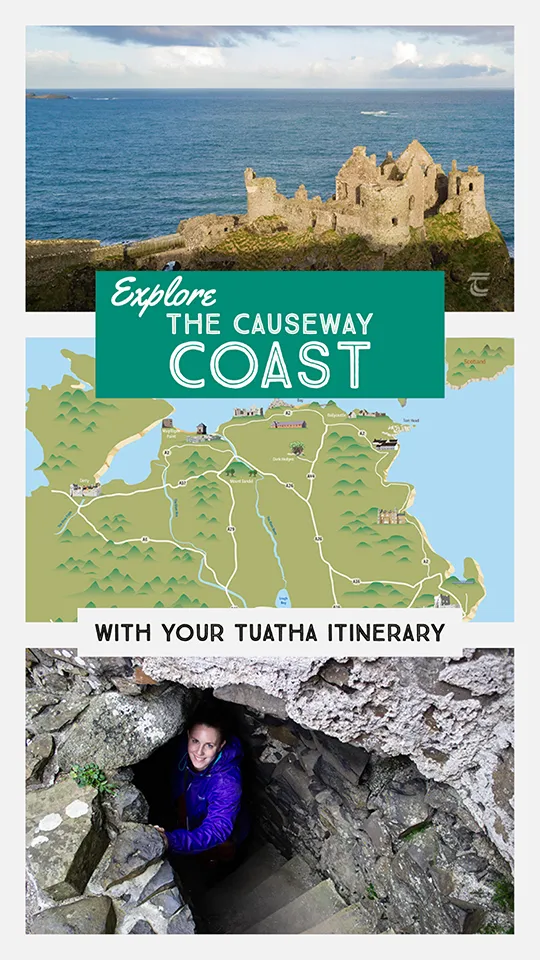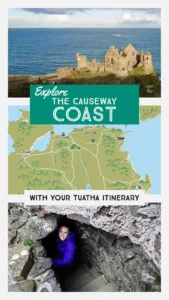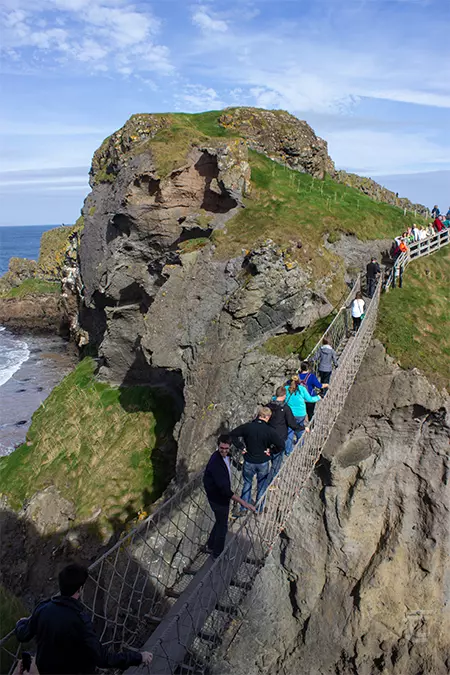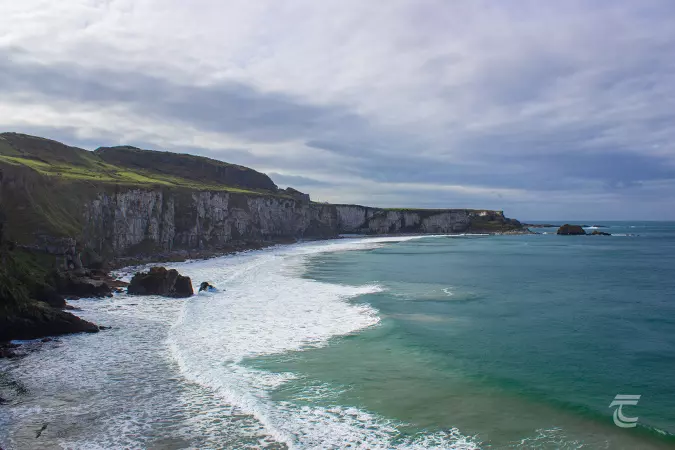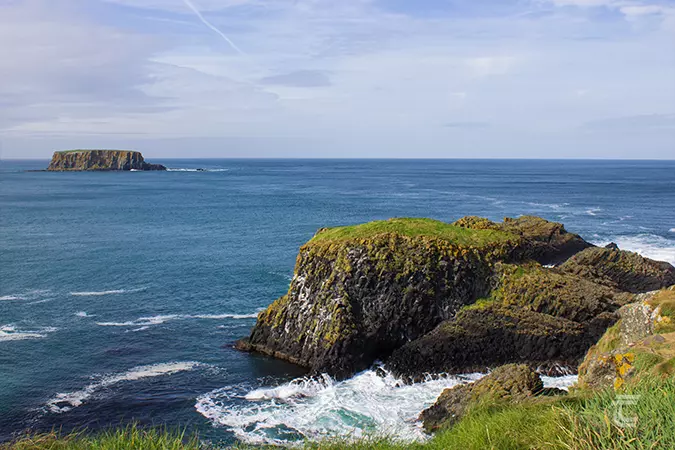Carrick-a-Rede Rope Bridge
One of the highlights of Northern Ireland’s tourist offering, the Carrick-a-Rede Rope Bridge is one of the best ways to glimpse the spectacular Causeway Coast. The site is now a bucket-list favourite, but it was once a vital asset to the local fishing community. The waters around Carrick-a-Rede are home to Atlantic salmon, the largest breed of salmon in the world. They lay their eggs in freshwater rivers and, when old enough, travel hundreds of miles to reach cool saltwater.
The name Carrick-a-Rede or Carraig-a-Rade, is Scots Gaelic for ‘The Rock in the Road’. This is likely in reference to the aquatic highway used by migrating salmon as they make their way back to their spawning grounds. Alternatively, it may derive from the Irish; Carraig Dhroichid, meaning ‘the Rock of the Bridge’, or even Carraig an Raid ‘the Rock of the Throwing’.
Since 1620, Atlantic salmon have been fished at Carrick-a-Rede, but it wasn’t until 1755 that the fishing community began using rope bridges instead of boats. The early bridges were basic in their construction – even more hair-raising than today’s crossing! With just one handrail and huge gaps between the slats, these early bridges provided an essential pathway high above the Atlantic waves. In the 19th century more than 100 fishers and 10 fish carriers were working in the parish of Ballintoy, the townland which encompasses Carrick-a-Rede. Unfortunately due to fishing pressure at sea and river pollution, the salmon population began to decline, curbing their usual yield of hundreds of fish each day. A local fisherman recalled how they would regularly catch up to 300 fish in one trip, but in the final season before closing, they caught only 250 fish in the entire period from Spring to Autumn.
For practical information about visiting this site Click Here
One of the highlights of Northern Ireland’s tourist offering, the Carrick-a-Rede Rope Bridge is one of the best ways to glimpse the spectacular Causeway Coast. The site is now a bucket-list favourite, but it was once a vital asset to the local fishing community. The waters around Carrick-a-Rede are home to Atlantic salmon, the largest breed of salmon in the world. They lay their eggs in freshwater rivers and, when old enough, travel hundreds of miles to reach cool saltwater. The name Carrick-a-Rede or Carraig-a-Rade, is Scots Gaelic for ‘The Rock in the Road’. This is likely in reference to the aquatic highway used by migrating salmon as they make their way back to their spawning grounds. Alternatively, it may derive from the Irish; Carraig Dhroichid, meaning ‘the Rock of the Bridge’, or even Carraig an Raid ‘the Rock of the Throwing’.
Since 1620, Atlantic salmon have been fished at Carrick-a-Rede, but it wasn’t until 1755 that the fishing community began using rope bridges instead of boats. The early bridges were basic in their construction – even more hair-raising than today’s crossing! With just one handrail and huge gaps between the slats, these early bridges provided an essential pathway high above the Atlantic waves. In the 19th century more than 100 fishers and 10 fish carriers were working in the parish of Ballintoy, the townland which encompasses Carrick-a-Rede. Unfortunately due to fishing pressure at sea and river pollution, the salmon population began to decline, curbing their usual yield of hundreds of fish each day. A local fisherman recalled how they would regularly catch up to 300 fish in one trip, but in the final season before closing, they caught only 250 fish in the entire period from Spring to Autumn.
For practical information about visiting this site Click Here
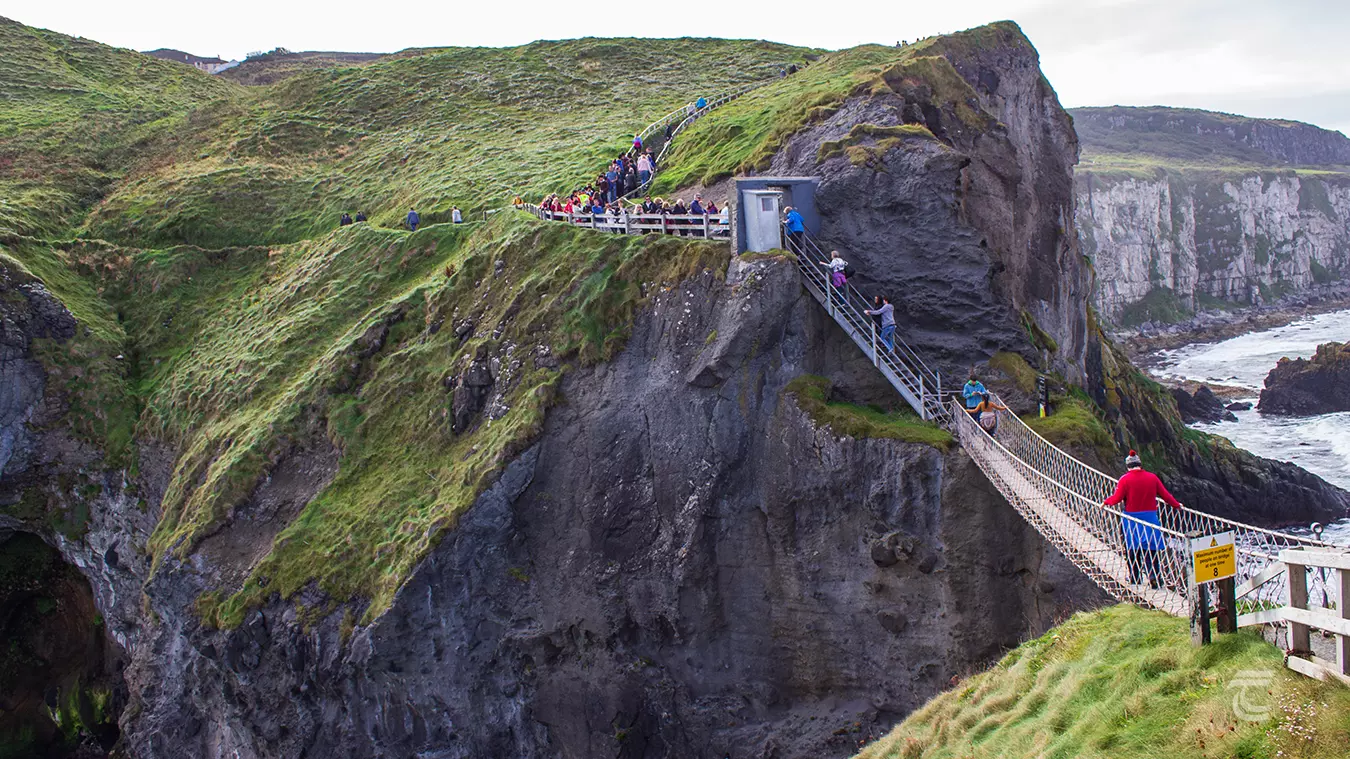
The Carrick a Rede Rope Bridge • Antrim
Crossing the Bridge
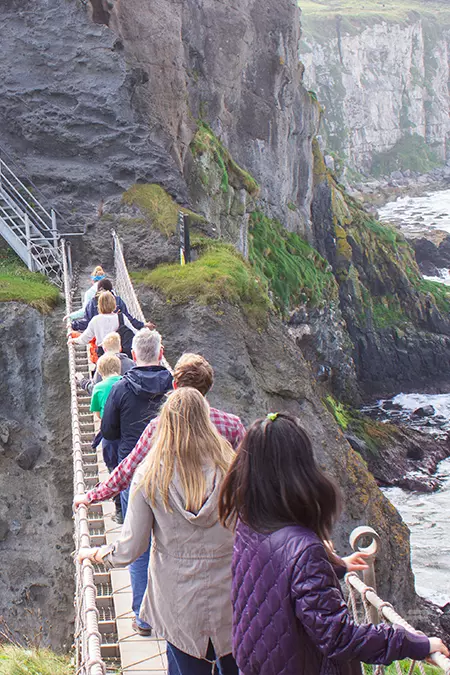
Queueing to cross the Carrick-a-Rede Rope Bridge • Causeway Coast
Thankfully the old bridge has been replaced with a modern one which measures 20m (66ft) in length and is suspended 30m (100 ft) above sea level. Today the Carrick-a-Rede Rope Bridge is a popular tourist attraction in Northern Ireland, with hundreds of thousands of people crossing it every year. Crossing the bridge is a thrilling experience and brave explorers will be rewarded with views along the Causeway Coast. A word of warning when talking selfies: many expensive cameras and phones have become property of the salmon below!
Carrick-a-Rede is cared for by the National Trust and the walk to the bridge itself is an enjoyable one. Meandering along the cliff edge, the view extends to Rathlin Island and beyond to Scotland’s coast. Seabirds such as guillemots, razorbills, kittiwakes and fulmars soar overhead and if you’re lucky you might even catch a glimpse of dolphins or basking sharks in the water below.
The car park for the Rope Bridge was once Larrybane quarry, and the surrounding white stone is Ulster white limestone. This ancient rock is formed by marine sediment that built up on the seabed and was compressed over millions of years to form hard rock. The limestone was quarried in the 19th century and was burnt in limekilns. Lime from the stone can be used for white-wash and to balance the Ph of agricultural fields. You can still see some of the drill holes in the quarry, showing where dynamite was inserted into the rock. Larrybane quarry was also used as a setting for the Iron Islands and Renly’s camp in the hit series Game of Thrones.

Queueing to cross the Carrick-a-Rede Rope Bridge • Causeway Coast
Left: visitors crossing the Rope Bridge • Upper left: view of the Causeway Coastal Route • Lower left: looking toward Sheep Island from Carrick-a-Rede.
Top: visitors crossing the Rope Bridge • Middle: looking toward Sheep Island from Carrick-a-Rede • Bottom: view of the Causeway Coastal Route
Explore more sites in Northern Ireland
